Tuesday, May 6, 2025 – Remember the days of Leona Helmsley and her Palace Hotel?


Behind the Curtain Wall w/ NYC Architect Richard Roth Jr: The Palace Hotel
Discover what made The Palace Hotel such a divisive project, and how the architect overcame each obstacle!
Joe Holmes
Tuesday, May 6, 2025
Untapped New York
ISSUE #1442

Every month this year, Untapped New York will release a new essay from Jo Holmes about the life and work of the late architect Richard Roth, Jr. of Emery Roth & Sons. Each essay explores a different building or developer from Richard’s career, intertwined with stories of his personal life and snippets of exclusive interviews conducted by Holmes and Untapped New York’s Justin Rivers (which can be viewed in our on-demand video archive). Check out the whole series here!
A Rare Opportunity
The Palace Hotel was a divisive project. Developers Harry and Leona Helmsley hit the headlines regularly in the late 20th century, for all the wrong reasons. Despite this, architect Richard Roth, Jr. of the family firm Emery Roth & Sons took on the challenge of designing a hotel tower for the Helmsleys, and by 1980, a 55-story dark bronze glass and aluminum building rose above the existing Gilded Age Villard Houses on the site.
The building has undergone several interior renovations since it was completed and is now known as The Lotte New York Palace Hotel. It has been described as ‘one of Manhattan’s most historically significant and luxurious hotels’ and ‘a unique merging of a 19th-century landmark mansion with a 20th-century high-rise tower.’Achieving that fusion successfully took careful handling on Richard’s part, both of the architecture and the clients.
A Historic Foundation
In the 1880s, railway magnate Henry Villard commissioned the illustrious architecture firm of McKim, Mead & White to design an unusual building between 50th and 51st streets on Madison Avenue. Modeled on the Palazzo della Cancelleria in Rome, the complex comprised six residences arranged in a U-shape around a courtyard. It was completed in 1884, just as Richard’s grandfather, Emery, arrived in the United States aged 13.
By 1974, the Roman Catholic Archdiocese of New York had gradually acquired all the residences. At that point, the Archdiocese sold the air rights to developer Harry Helmsley and granted him a 99-year lease on the houses.

“Our first designs were for offices. But the banks said there were too many and they were too empty,” explained Richard. It was a generally tough time for developers and architects in New York. (Richard was traveling the world regularly to drum up business elsewhere.) Helmsley couldn’t raise the finance for his next idea of making half the building a hotel and the other half offices either, so he opted to just build a hotel.
Many people were, understandably, worried about the implications for the much-loved Villard Houses. “The project took longer than we had expected because we wound up before the Board of Estimate, before the City Council, before the Landmarks Preservation Commission, before every agency in the City of New York. And there was a group of people from the local community board who absolutely hated Harry Helmsley. Why, I don’t know,” explained Richard. “I had over 100 meetings with them!” said Richard.
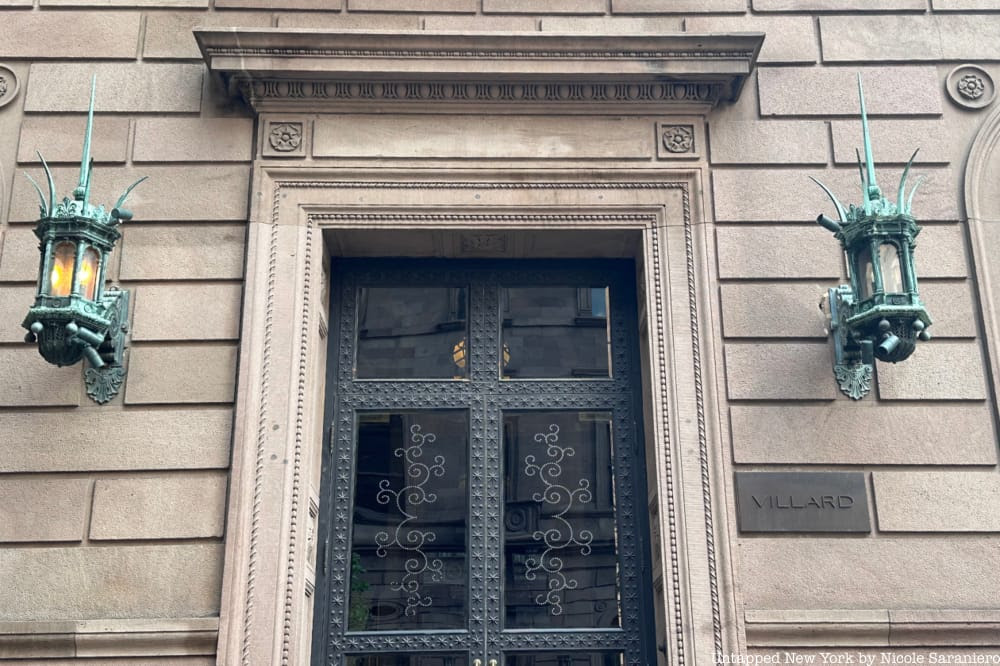
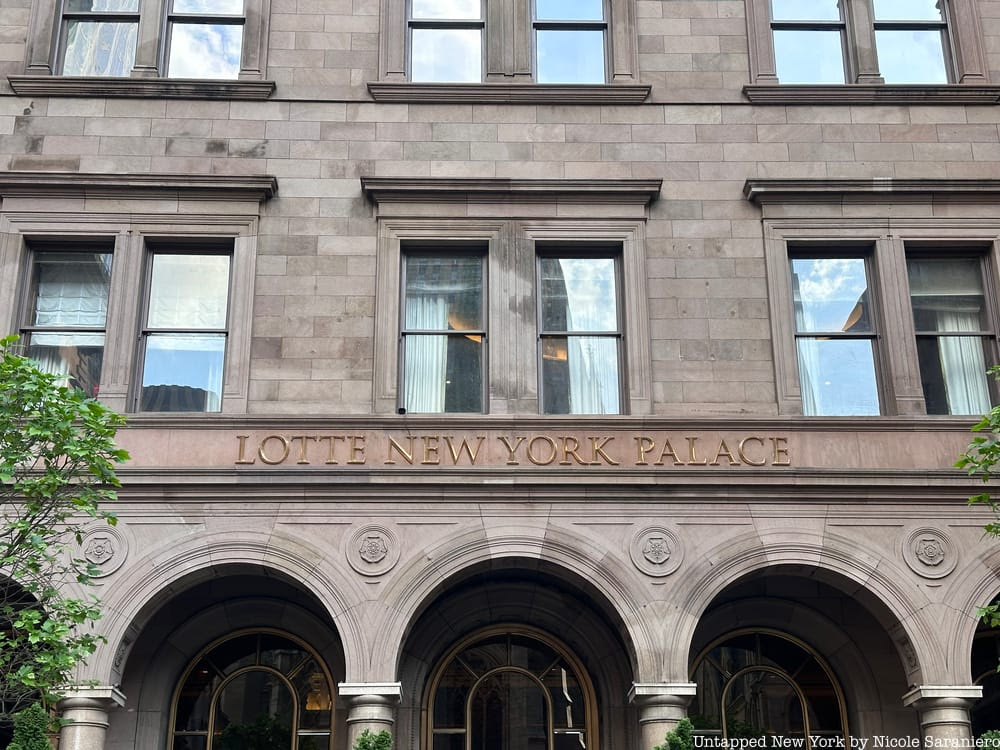

All these negotiations had the positive impact of getting Helmsley to make greater efforts to preserve the Villard Houses. But ultimately, the community board couldn’t prevent a new development altogether, which they seemed to want to do. “At one meeting, the City Council members asked the community board members point blank: ‘If it was up to you and this was the most beautiful building in the world…would you still be against it?’ And they said, ‘Yes, we’d be against anything Harry Helmsley did,’” described Richard. “I turned to our lawyer, and I said, we just won…”
There was a point when the community board tried to sue everyone involved because the plans specified a 50-story building, but there was a sign on the site suggesting the building would be 55 floors (the discrepancy related to ‘mechanical’ floors without accommodation). “They even sued the guy who did the sign!” explained Richard. “That was a first!”
For Richard, incorporating the Villard Houses held great opportunities. The Archdiocese had used the Gold Room (originally a music room) in the main residence for religious services. “It was really something–very spectacular. The original idea was to tear it apart and make a dining room out of it. But I said: ‘This is the perfect lounge.’ I mean, what a great place for cocktails! It had a balcony, and I said you could put a string quartet up there and it would just be wonderful. So, we really turned the Archdiocese into a bar,” laughed Richard.

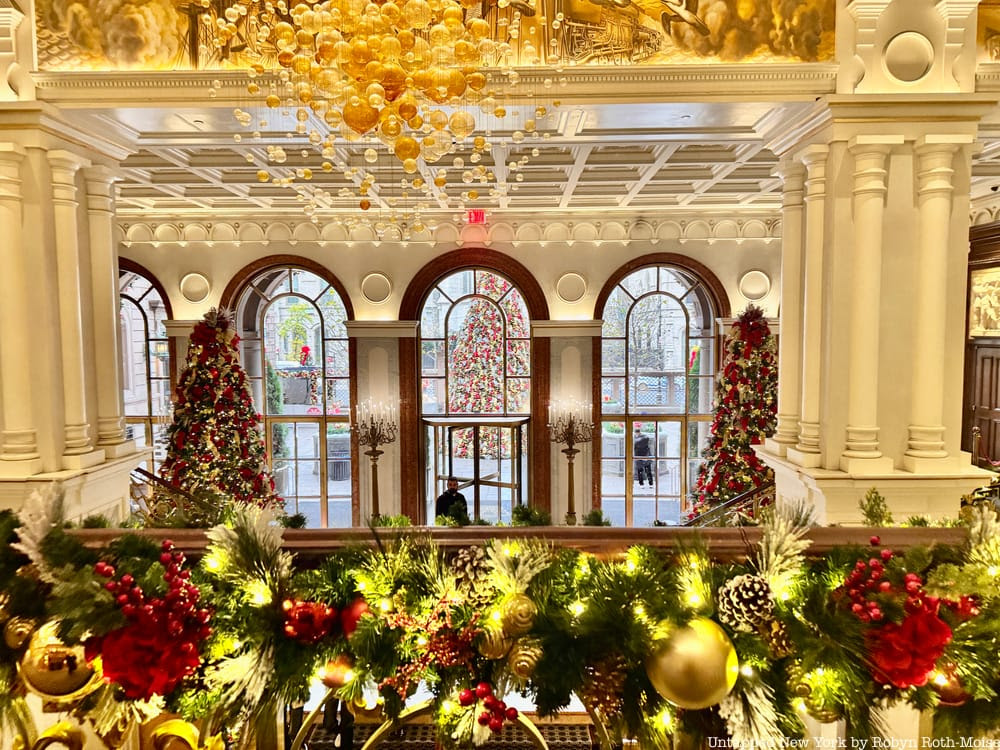
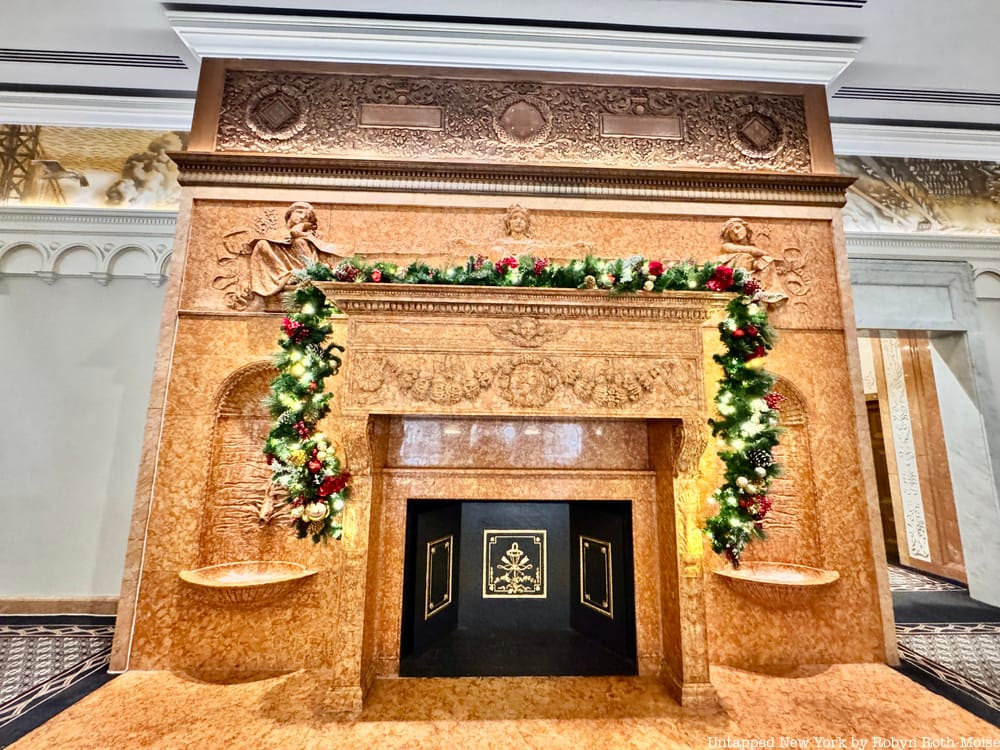
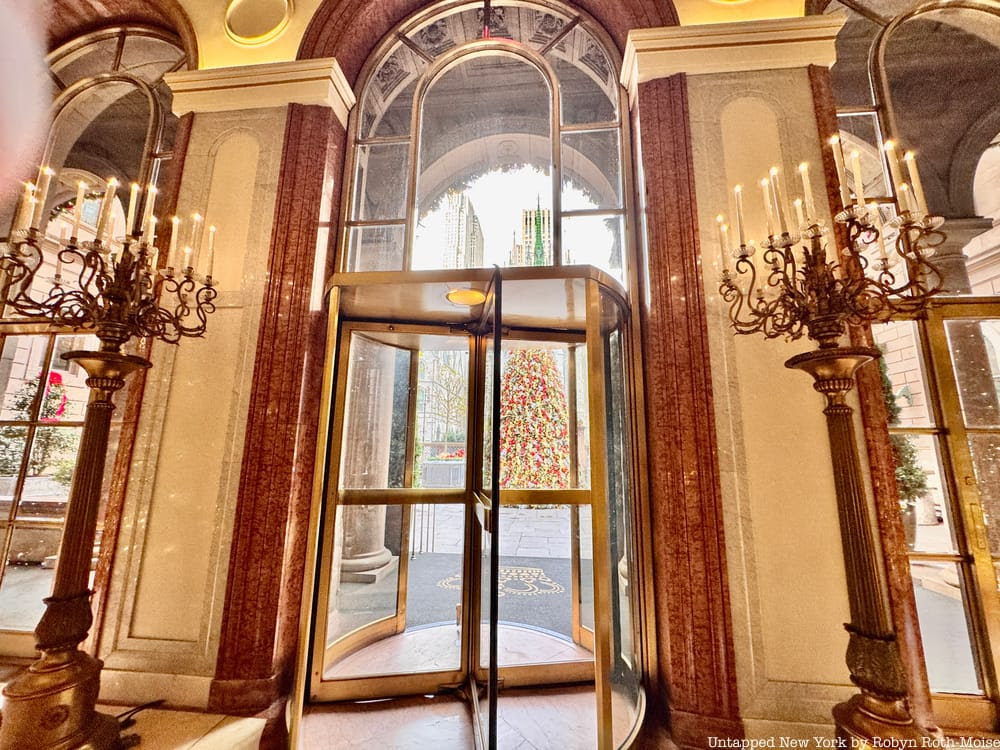
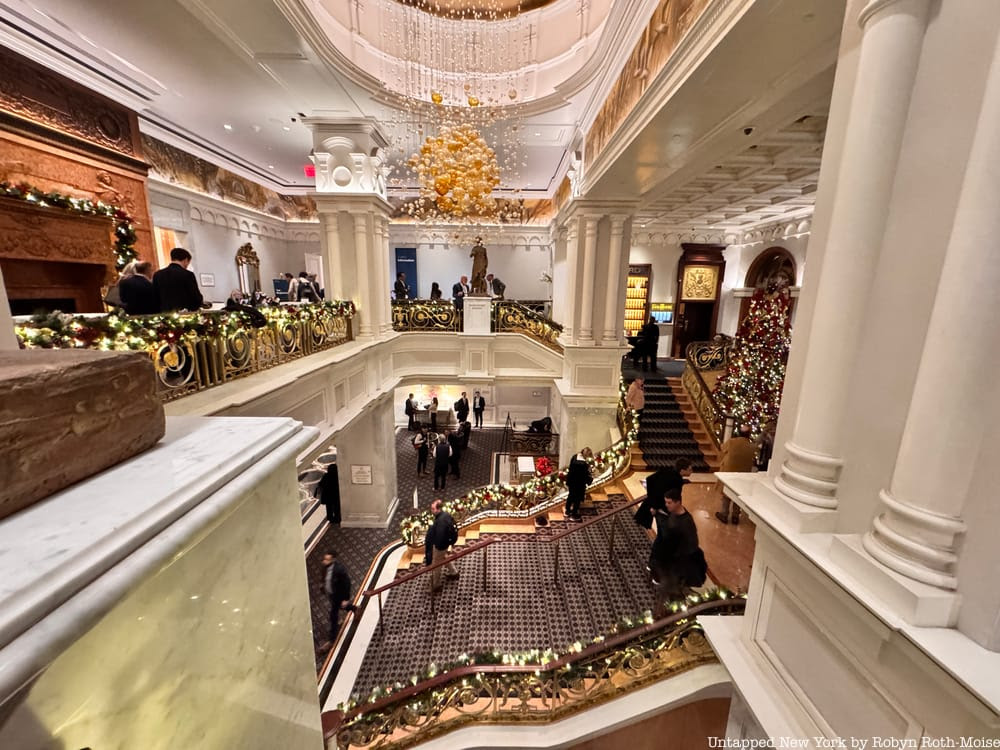
It’s illegal to serve hard liquor within a certain distance of the entrance to a church or a school. “We were on top of St Patrick’s Cathedral,” said Richard. “So, we had to measure the distance from the entrance of the hotel to the entrance of the cathedral. The Lady Chapel door at the back was nearest. We made it by three feet!”

A Tricky Client
Harry Helmsley put Leona in charge of the project. She already had a reputation for being demanding and unpleasant, but Richard found he could ‘manage’ her.
“She liked the look of the Park Lane Hotel and wanted to use columns on the façade in the same way. We did the drawings and she loved it–we hated it. It was absolutely the wrong design,” said Richard. So, he got ‘the other side’ involved. He encouraged architecture critic Ada Louise Huxtable to lobby to have the plans thrown out. “Leona never knew it and Harry never knew it…but one had to do things like that at times.”
Not long after the hotel opened in 1981, Richard went to a party in Harry Helmsley’s honor. “Leona beckoned me over and said: ‘I have three problems with the Palace Hotel.’” She explained the first two issues, which related to air conditioning and elevators. Richard told her he knew about these concerns, and they’d be resolved within a month.

Then it came to problem number three. “Leona said, ‘People are falling off the toilets…’ It took everything in me not to laugh!” remarked Richard. It so happened he had a friend who was staying there. “I called her and said, ‘Lizzie, can I come over and sit on your toilet?’ She said, ‘Sure, come on over.’ So, I went, and I sat on the toilet and the toilet seats were the cheapest piece of nonsense I’d ever seen. They were just terrible.” He checked his original specifications. “We’d spec’d the best toilet seats—made by a company called Church. I called Leona. Now, she had a deep resentment and hatred for Carl Morse who was head of Diesel Construction, who did all of Helmsley’s construction. Harry had a wonderful relationship with Carl—he trusted Carl.” Richard called Leona and explained it appeared Carl Morse had bought cheap toilets, not following the specifications. “There was this smile I could see through the telephone because she had something she could pin on Carl.”
Somewhat surprisingly, given the financial irregularities that would land Leona in jail, Richard said the Helmsleys always paid their bills on time. “Even though Leona had a notorious reputation for being difficult in all other ways, she was very good about paying her bills. We never had a problem with payment from Harry Helmsley ever, on anything.”
An Abrupt Ending
Richard had some later encounters with Leona. “She owned the Holiday Inn on Longboat Key near Sarasota, Florida. After she got out of jail, she called me and said, ‘Richard, these architects down here are driving me crazy. You are the only architect I know who I respect and who will tell me the truth.’”
She wanted to add a floor to create an apartment for herself. Despite some health issues—Richard had had cancer a couple of years prior and was just recovering from a case of Legionnaires’ disease—he went down to see her, taking an engineer and an interior designer. Having investigated, Richard had to tell Leona it wouldn’t be possible to build her apartment without closing the hotel, which she couldn’t afford to do. This is likely what others had said, but she took it from Richard: “She trusted me.” But that wasn’t to last.
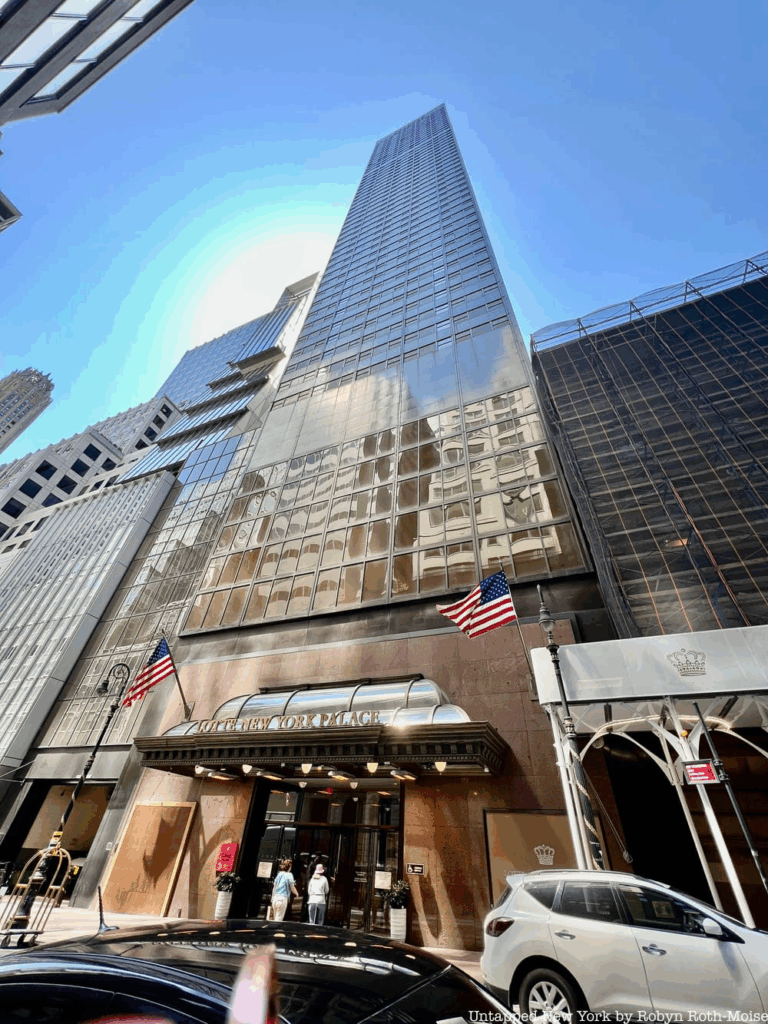
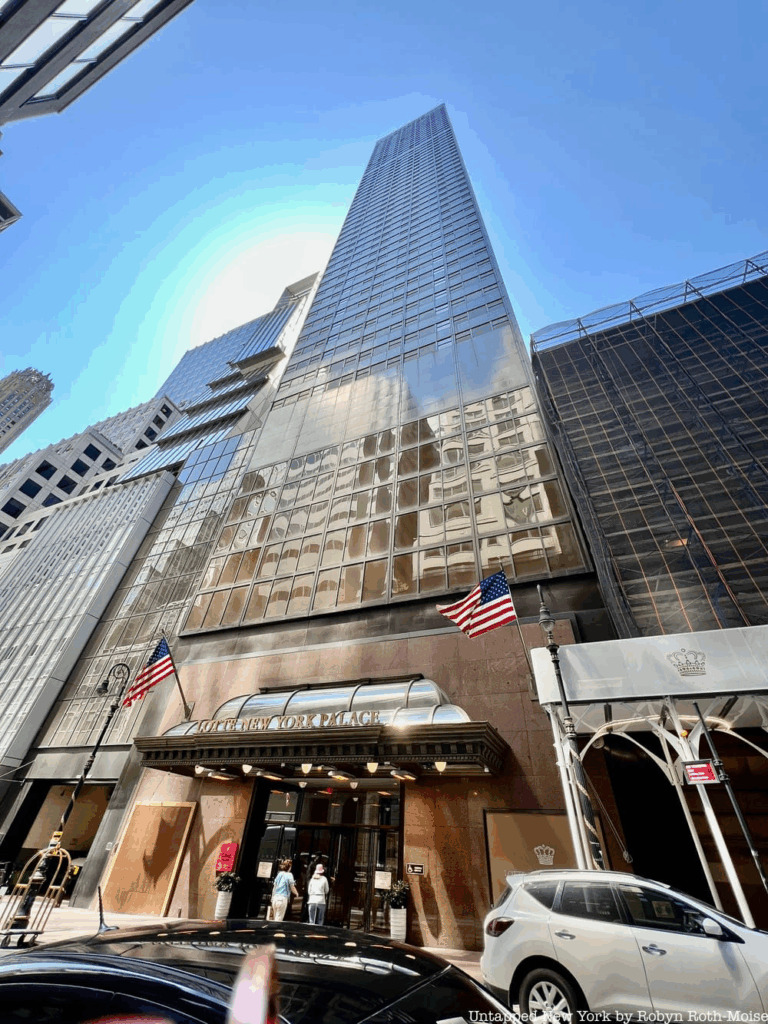
“About six months later, I’m getting ready to retire and move to the Bahamas. Leona calls me and says, ‘I bought the top floor of a building under construction, and I’ve dealt with five architects and none of them know what I want. I need you.’”
Richard decided it was a project his son, who was based in Miami, could manage once he himself had done the initial design. “I’d been living in the Bahamas for probably two months when I get a call from her lawyer. He says: ‘Richard, I have some very bad news for you: Leona wants me to fire you.’ I said, ‘That’s the best news I’ve had in years!’”
The job had proved frustrating. Richard asked the lawyer how long he’d worked for Leona. “He said, ‘Two months.’ I said, ‘That’s good because you got about three to go.’ There was dead silence, then he said, ‘Are you telling me she’s gonna fire me?’ I said, ‘No lawyer’s ever worked for her for more than six months.’ So, that was the end of my conversation with the lawyer and the end of my conversations with Leona.”

A Special Job
While some may dislike the exterior of the hotel tower, many are happy that the historic houses survive to the extent they do. “It’s difficult to hide a 50-story building, so the looks of the building really took a simplistic form in trying to match the colour of the Villard Houses as best as possible,” said Richard. “But you can’t hide an elephant!”
It was built in an era when scandals swirled around real estate, but Richard felt he was able to maintain his integrity despite working with ‘the Queen of Mean.’ He enjoyed working with Harry and loved the Palace Hotel. For him, there was never any intention to overshadow, detract, or distract from the Villard Houses. “You couldn’t have designed a better entry than having this wonderful garden in front and these huge arches that led you into the hotel. I mean it was an architect’s dream…it really made this something very special.”
PHOTO OF THE DAY
THE NEW Maker LAB
was officially opened on Friday.
A space innovation, creation and designing
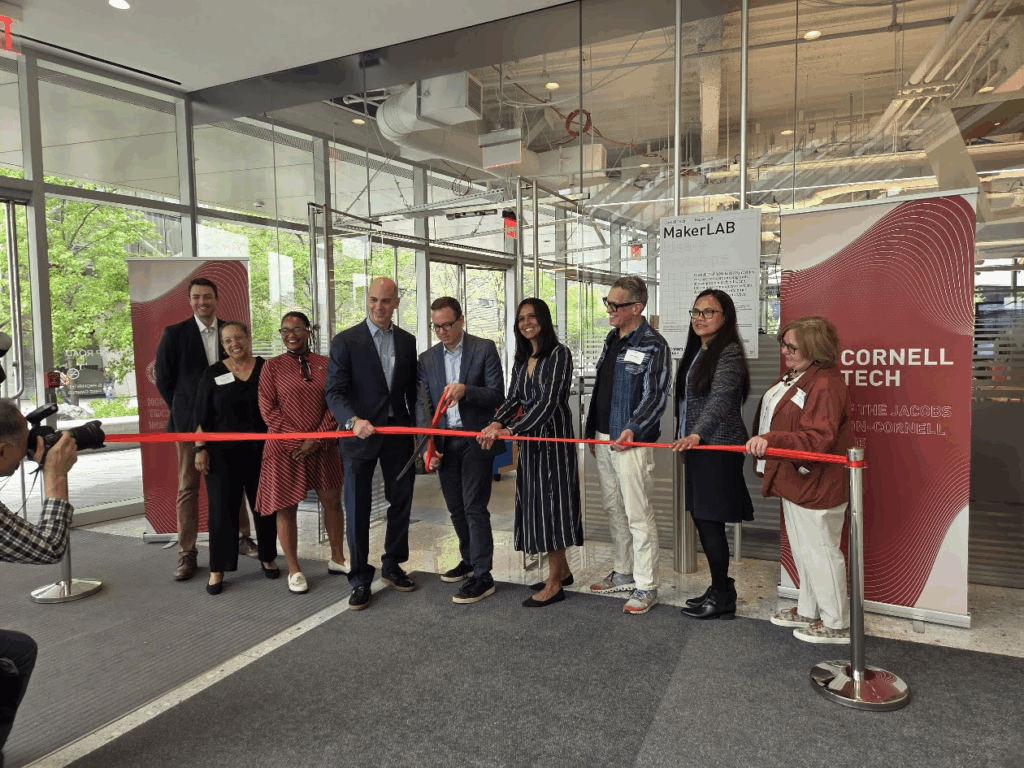
CREDITS
Tags: Central Park Police Precinct Building, Central Park Police Stables Building, Jacob Wrey Mould Stables Central Park, Oldest Buildings in Central Park, Stables 1871 Central Park, Stables 86th Street Central Park, Stables 86th Street Transverse Central Park, NYPL Digital Collections
All image are copyrighted (c) Roosevelt Island Historical Society unless otherwise indicated
THIS PUBLICATION FUNDED BY DISCRETIONARY FUNDS FROM CITY COUNCIL MEMBER JULIE MENIN & ROOSEVELT ISLAND OPERATING CORPORATION PUBLIC PURPOSE FUNDS.


Copyright © 2024 Roosevelt Island Historical Society, All rights reserved.Our mailing address is:
rooseveltislandhistory@gmail.com

Leave a comment